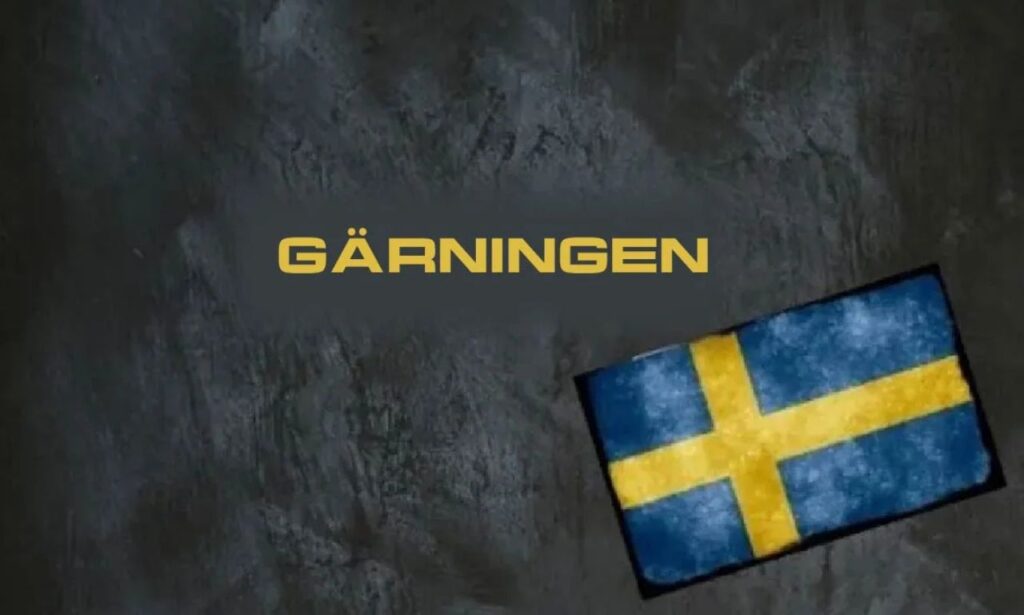In a world where actions often speak louder than words, the concept of Gärningen emerges as a beacon of significance. Rooted in ancient traditions and enriched through centuries, Gärningen encapsulates the essence of deeds that shape our lives and societies. But what does it truly mean? As we navigate through its historical roots and contemporary applications, we’ll uncover how this intriguing notion has evolved across civilizations. Join us on this journey to explore the multifaceted layers of Gärningen—where history meets modern relevance—and discover why understanding it can enrich your personal development and societal contributions today.
What is Gärningen?
Gärningen, a term rooted in history, embodies the concept of action or deed. It is often associated with intentionality and purpose.
In various contexts, gärningen signifies more than just an act; it reflects the motivations behind that act. This distinction allows for deeper exploration into human behavior.
The essence of gärningen can be found in how individuals engage with their surroundings. From ancient rituals to modern practices, each manifestation reveals something essential about our nature.
Culturally diverse interpretations enrich our understanding of gärningen. In some societies, it symbolizes collective effort; in others, it’s tied to personal growth.
This multifaceted concept encourages us to reflect on our actions and their implications. As we navigate through life’s complexities, recognizing the significance of gärningen becomes crucial for personal development and societal progress.
The origins of Gärningen in ancient civilizations
Gärningen has deep roots in ancient civilizations, where it served as a cornerstone of societal values. The term itself embodies the actions and intentions that define human experience.
In Mesopotamia, for instance, Gärningen was intertwined with agricultural practices. People believed their deeds directly influenced crop yields and community prosperity. Rituals were developed to honor this connection.
Similarly, in Ancient Egypt, Gärningen related closely to the concept of Ma’at—truth and order. Every action had moral weight; individuals strived for harmony within society through their choices.
The Greeks added another layer by emphasizing personal virtue in public life. They saw Gärningen not just as acts but as reflections of character.
These early interpretations set the stage for how we perceive meaningful actions today, showcasing humanity’s enduring quest to find purpose through our deeds across timelines and cultures.
Evolution and adaptation of Gärningen in different cultures
Gärningen has taken various forms across cultures, reflecting unique societal values and historical contexts. In ancient Greece, it was intertwined with concepts of virtue and civic responsibility. Citizens engaged in Gärningen to enhance community well-being.
In the East, particularly within Buddhist traditions, Gärningen evolved into a practice of mindful actions contributing to spiritual enlightenment. Here, the focus shifted from societal benefits to inner peace.
During the Renaissance, Gärningen gained prominence in Europe as artists embraced creativity as a form of expression tied closely to individual identity. This period emphasized personal development through meaningful contributions.
Today’s globalized world sees merging elements from diverse backgrounds. It encourages collaboration while respecting cultural nuances. Various movements advocate for social justice and environmental sustainability under this umbrella term.
As societies continue to change, so does the interpretation of gärningen—each adaptation revealing deeper insights into human connection and purpose.
Historical examples of Gärningen in action
Throughout history, Gärningen has manifested in various forms. One notable example is the ancient Greek city-states, where citizens actively participated in the democratic process. This collective engagement represented a significant realization of Gärningen as public service and duty.
In medieval Europe, guilds emerged as another illustration. Craftsmen banded together to support each other economically and socially. Their commitment to their trades exemplified through collaboration for mutual benefit.
The Enlightenment period brought forth thinkers like Rousseau and Voltaire, who emphasized individual empowerment within society. Their writings inspired revolutions that embodied the essence of Gärningen—people taking action for change.
Across continents, indigenous communities have long demonstrated this concept by preserving traditions while adapting to modernity. Their resilience showcases how historical examples of Gärningen continue to resonate across cultures and time periods.
Modern interpretations and applications of Gärningen
Modern interpretations of gärningen have expanded widely, transcending its historical roots. Today, the concept embodies not only actions but also intentions behind those actions.
In various fields such as psychology and philosophy, is viewed through lenses that prioritize mindfulness and conscious decision-making. This shift emphasizes ethical dimensions in everyday life.
Social movements often draw on the essence of to inspire collective action and change. Activists highlight the importance of individual contributions toward communal goals, showcasing how small deeds can lead to significant societal transformations.
In personal development programs, practitioners encourage individuals to engage in intentional acts that align with their values. This focus fosters a deeper connection between self-awareness and meaningful living, demonstrating how modern society interprets gärningen as integral to personal fulfillment.
The impact of Gärningen on society and personal development
Gärningen plays a significant role in shaping both society and individual growth. At its core, it encourages proactive engagement with the world around us. This active participation fosters a sense of community, promoting collaboration and shared goals.
On a personal level, nurtures self-awareness. Individuals learn to reflect on their actions and decisions, leading to deeper insights into their values and beliefs. As people become more conscious of their impact, they often embrace responsibility for positive change.
Moreover, the principles behind can inspire movements that address societal issues. When communities unite under this concept, they cultivate resilience against challenges and create pathways for innovation.
The ripple effect is powerful; as individuals evolve through Gärningen’s practice, entire societies benefit from heightened empathy and understanding among diverse groups. Such transformation not only enhances interpersonal relationships but also strengthens social cohesion at large.
The enduring relevance of Gärningen in today’s world
Gärningen resonates deeply in today’s fast-paced society. It represents a call to action, urging individuals to engage meaningfully with their communities and the environment.
In an age dominated by digital interactions, the essence of reminds us of our humanity. It emphasizes tangible contributions over virtual gestures. This shift cultivates a sense of belonging and purpose.
Moreover, encourages mindfulness in personal development. Individuals strive for growth while considering their impact on others—a refreshing perspective amid self-centered narratives.
Social movements worldwide draw inspiration from this concept. Activists harness its power to advocate for change and justice, highlighting how collective efforts can reshape futures.
The relevance of Gärningen manifests not only through individual actions but also through collaborative initiatives that foster inclusivity and understanding across diverse groups. Embracing this philosophy allows society to evolve positively while nurturing deeper connections among people.
Conclusion
Gärningen holds a significant place in both historical and contemporary contexts. Its roots stretch deep into ancient civilizations, where it served as a fundamental principle guiding societal values and behaviors. As cultures evolved, so did the interpretation of adapting to local customs while retaining core elements that resonate through time.
Through various historical examples, we can see how has manifested in actions that shaped societies and influenced personal growth. From philosophical teachings to practical applications in daily life, its relevance transcends mere ideology; it becomes a driving force for change.
Today’s world faces unique challenges that demand innovative responses grounded in traditions like gärningen. By embracing this concept, individuals can foster personal development while contributing positively to society at large.
The enduring nature of demonstrates its capacity to inspire action and reflection across generations. As we navigate complexity in our lives, understanding and applying the principles behind gärningen may just be what we need for meaningful progress.






